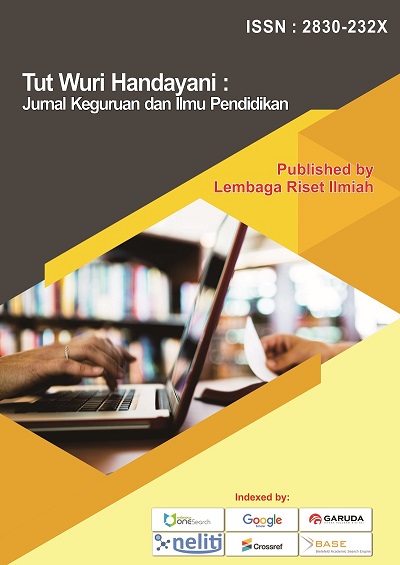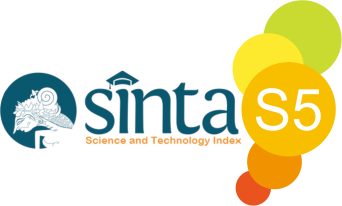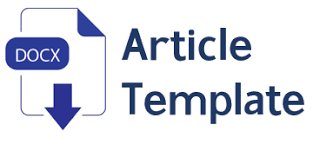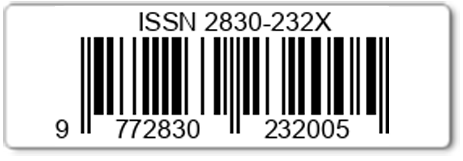Integrasi Teori Motivasi dalam Pembelajaran PAI: Strategi Meningkatkan Keterlibatan Belajar Peserta Didik Abad 21
DOI:
https://doi.org/10.59086/jkip.v4i1.737Keywords:
Motivasi , Mutu Pembelajaran, Pendidikan Agama IslamAbstract
This study aims to analyze the impact of motivation on improving the quality of Islamic Religious Education (PAI) learning in educational institutions. The method used is a literature review with content analysis of various motivation theories and their application in the context of PAI learning. Information was obtained from several sources such as books, journals, and relevant documents during the research period. The research findings indicate that motivation plays a crucial role in enhancing students’ interest and academic achievement, especially when PAI material can be implemented as a guide for daily behavior. These results emphasize that strengthening diverse and relevant learning motivation can make PAI theory more meaningful and practical. In conclusion, integrating motivational theory into PAI learning not only stimulates students’ enthusiasm for learning but also encourages them to apply religious values more genuinely in daily life. Practical recommendations from this study suggest that educators design motivational strategies suited to the needs and characteristics of students, in order to achieve the goals of religious education more effectively.
References
Amni Fauziah, dkk. (2017). Hubungan Antara Motivasi Belajar dengan Minat Belajar Siswa Kelas IV SDN Poris Gaga 05 Kota Tangerang. Jurnas Pendidikan Sekolah Dasar, 4(1), 83.
Amni Fauziah, D. (2017). Hubungan Antara Motivasi Belajar dengan Minat Belajar Siswa Kelas IV SDN Poris Gaga 05 Kota Tangerang. Jurnas Pendidikan Sekolah Dasar, 4(1), 50.
Andjarwati, T. (2015). Motivasi dari Sudut Pandang Teori Hirarki Kebutuhan Maslow, Teori Dua Faktor Herzberg, Teori X Y Mc Gregor, dan Teori Motivasi Prestasi Mc CLelland. Jurnal Ilmu Ekonomi Dan Manajemen Fakultas Ekonomi Universitas 17 Agustus 1945 Surabaya, 1(1), 50.
Aritonang, K. T. (2008). Minat dan Motivasi dalam Meningkatkan Hasil Belajar Siswa. Jurnal Pendidikan Penabur, 10, 14.
Hamruni. (2014). Pembelajaran Berbasis Edutainment : Landasan Teori dan Metode-Moetode Pembelajaran Aktif Menyenangkan (PAIKEM). CV. Investidaya.
Lisa, G. &. (2011). Pengaruh Motivasi Belajar Siswa Terhadap Prestasi Belajar IPA di Sekolah Dasar. Jurnal Universitas Pendidikan Indonesia: Jurnal Penelitian Pendidikan, 12, 83.
Mappeasse, M. Y. (2009). Pengaruh Cara dan Motivasi Belajar Terhadap Hasil Belajar Programmable Logic Controller (PLC) Siswa Kelas III Jurusan Listrik SMKN 5 Makassar. Jurnal MEDTEK, 1.
Santrock, J. W. (2009). Psikologi Pendidikan. Salemba Humanika.
Sardiman. (1996). Interaksi dan Motivasi Belajar Mengajar : Pedoman Bagi Guru dan Calon Guru. PT Raja Grafindo.
Sardiman. (2005a). Interaksi dan Motivasi Belajar Mengajar. PT Raja Grafindo.
Sardiman. (2005b). Interaksi dan Motivasi Belajar Mengajar. PT Raja Grafindo.
Sardiman. (2005c). Interaksi dan Motivasi Belajar Mengajar. PT Raja Grafindo.
Sardiman. (2005d). Interaksi dan Motivasi Belajar Mengajar. PT Raja Grafindo.
Sardiman. (2005e). Interaksi dan Motivasi Belajar Mengajar. PT Raja Grafindo.
Sardiman. (2005f). Interaksi dan Motivasi Belajar Mengajar. PT Raja Grafindo.
Sardiman. (2005g). Interaksi dan Motivasi Belajar Mengajar. PT Raja Grafindo.
Schunk, D. H. (2012). Learning Theoris and Educational Perspektive: Teori-Teori Pembelajaran dalam Perspektif Pendidikan. Pustaka Pelajar.
Suhardi. (2013a). The Science Of Motivation. Elex Media Komputindo.
Suhardi. (2013b). The Science Of Motivation. Elex Media Komputindo.
Uno, H. B. (2008). Teori Motivasi dan Pengukurannya; Analisis di Bidang Pendidikan (J. B. Aksara (ed.)).
Downloads
Published
How to Cite
Issue
Section
License
Copyright (c) 2025 Muchammad Iqbal Chailani, Abdul Wahab Fahrub, Farach Feby Febyola

This work is licensed under a Creative Commons Attribution 4.0 International License.
Tutwurihandayani Jurnal Ilmu Pendidikan
Publisher Lembaga Riset Ilmiah
© 2023

This work is licensed under a Creative Commons Attribution 4.0 International License.


















